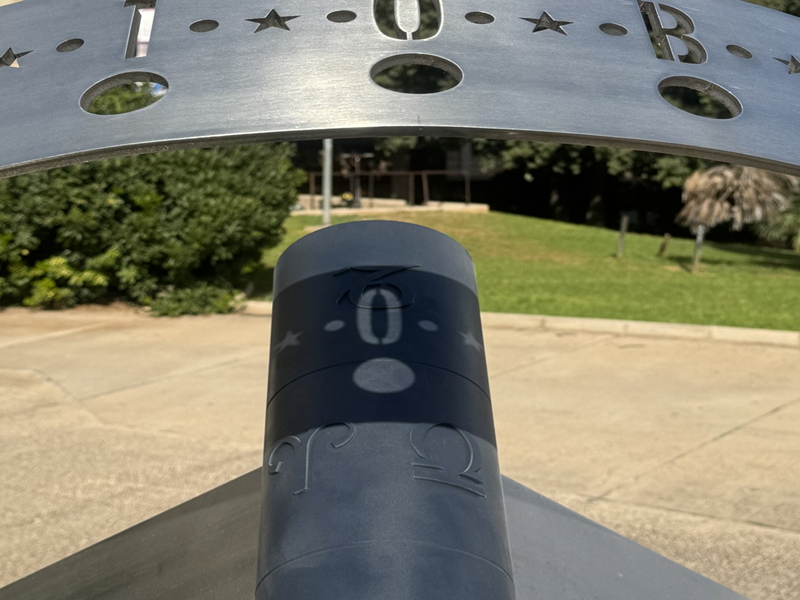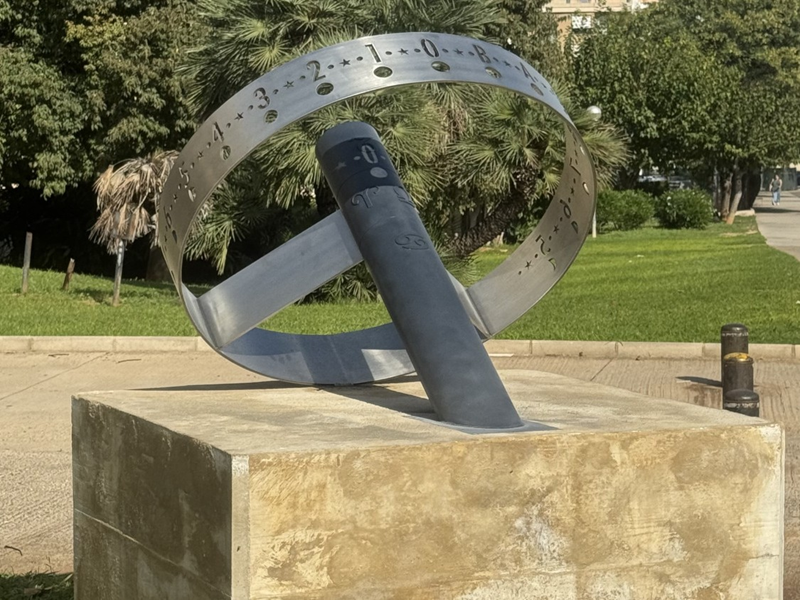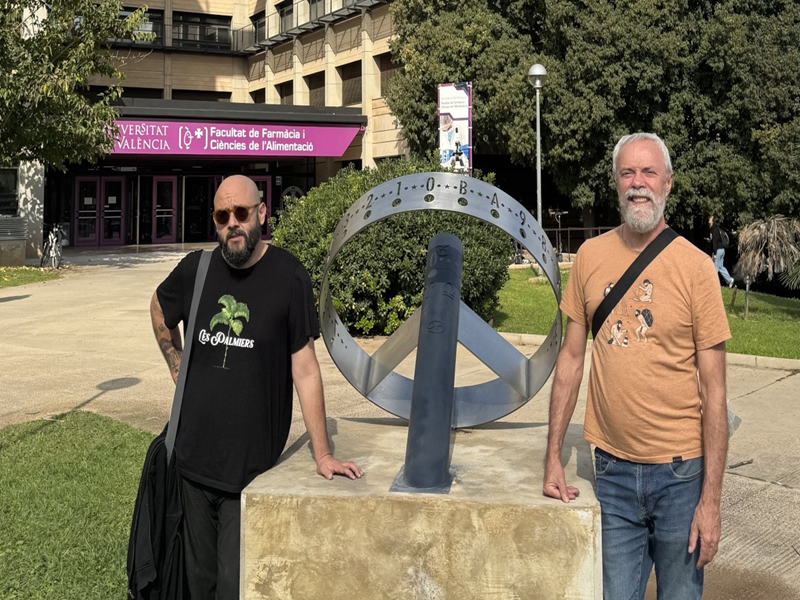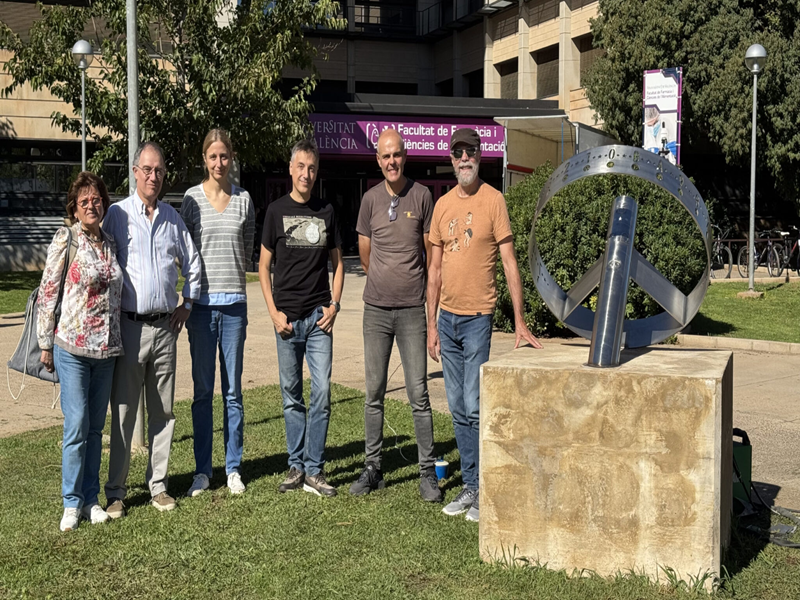
For the past few days, the Burjassot-Paterna campus of the Universitat de València has had an equatorial sundial installed in the garden in front of the Facultat de Farmàcia i Ciències de l’Alimentació.
This new solar quadrant forms part of the set of works and activities carried out over the last two years to commemorate the 500th anniversary of the birth of Jeroni Munyós, a mathematician, astronomer and Renaissance humanist who was a professor at the Universitat de València during the sixteenth century. It also serves as a reminder of the 450 years since the observation in València of the supernova of 1572, which Jeroni Munyós studied and about which he wrote the treatise Libro del nuevo cometa.
The new sundial is the work of the gnomonist from Otos, Joan Olivares, and it was built at Tallers Agullent. Joan Olivares is the author of an extensive collection of sundials distributed throughout the Valencian territory.
The sundial consists of two main elements:
– An equatorial cylinder one metre in diameter, into which the hour digits have been perforated.
– A central cylinder 158 mm in diameter, set perpendicularly and parallel to the Earth’s axis of rotation, onto which the hour digits are projected and where both the time and the season of the year can be read.
For the hour numerals, the duodecimal system has been used, in which A corresponds to 10:00, B to 11:00 and 0 to 12:00. This choice responds, on the one hand, to the desire to maintain symmetry in the areas occupied by the numbers and, on the other, to the intention of introducing a certain degree of mathematical challenge in reading the clock, fitting for a science campus.
As with all equatorial sundials, in addition to determining solar time, this one also allows observation of the moments of entry and exit of the seasons, through the shadow cast by the equatorial cylinder upon the central cylinder.
When the shadow falls on the zodiac signs Aries and Libra, located in the central area, it indicates the spring and autumn equinoxes.
When it falls on Cancer, at the lower part, it marks the summer solstice; and when it falls on Capricorn, at the upper part, it indicates the winter solstice.
This sundial also makes it possible to read the time using the Moon. The approximate reading is obtained by adding or subtracting hours depending on the lunar phase visible in the sky, in comparison with the indications of the sundial.
The sundial is built from stainless steel, and the digits and symbols have been laser-cut.
Moreover, it is a very useful educational tool for explaining the fundamentals of descriptive astronomy, as it allows a simple understanding of the apparent movement of the Sun, the seasons and the different timekeeping systems.
This project has been carried out with the collaboration of the Servei de Cultura de la Universitat de València, the Unitat de Campus de Burjassot, the Facultat de Física and the Departament d’Astronomia i Astrofísica.
All photos by Enric Marco.
Images:











